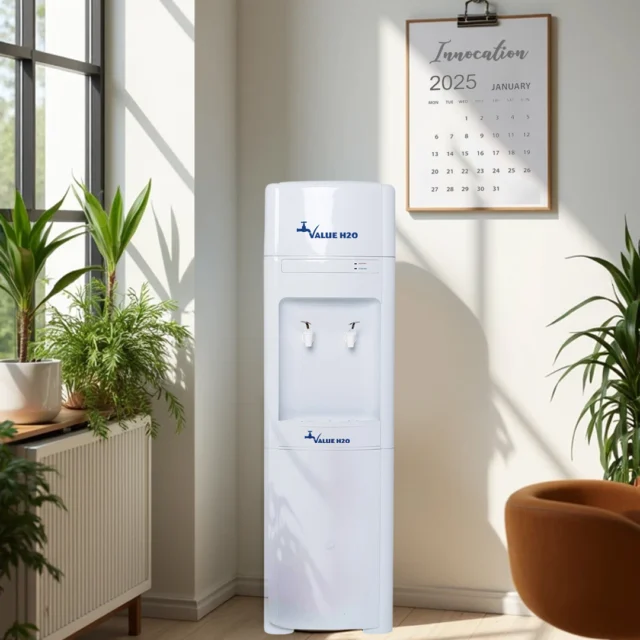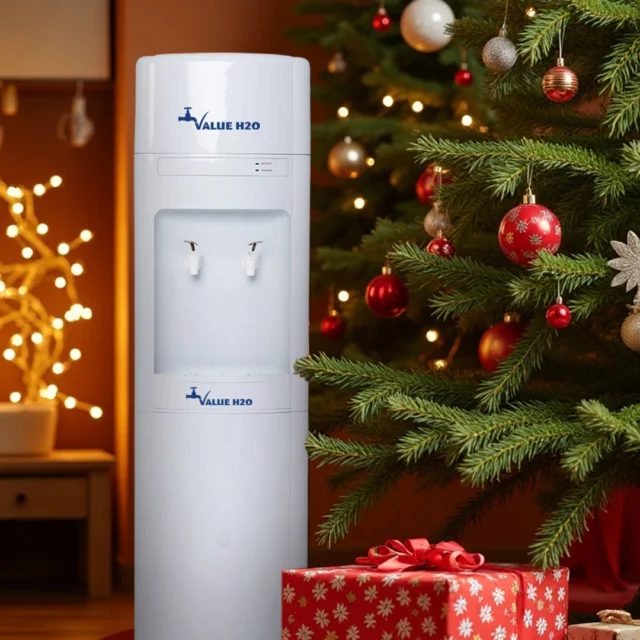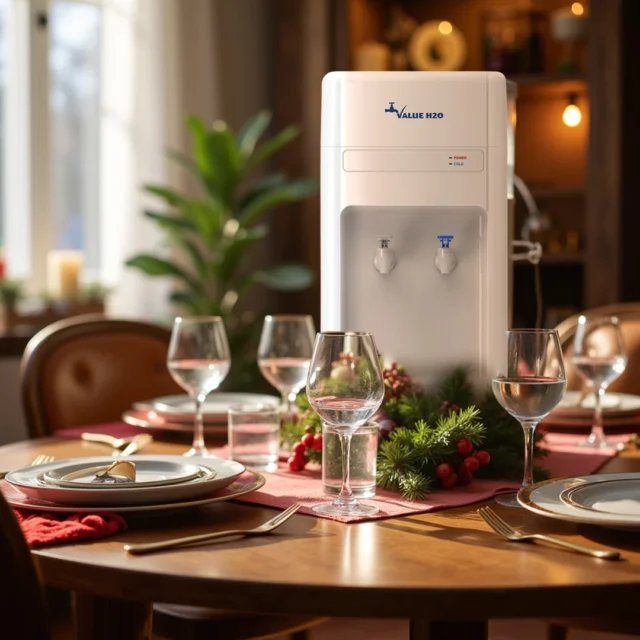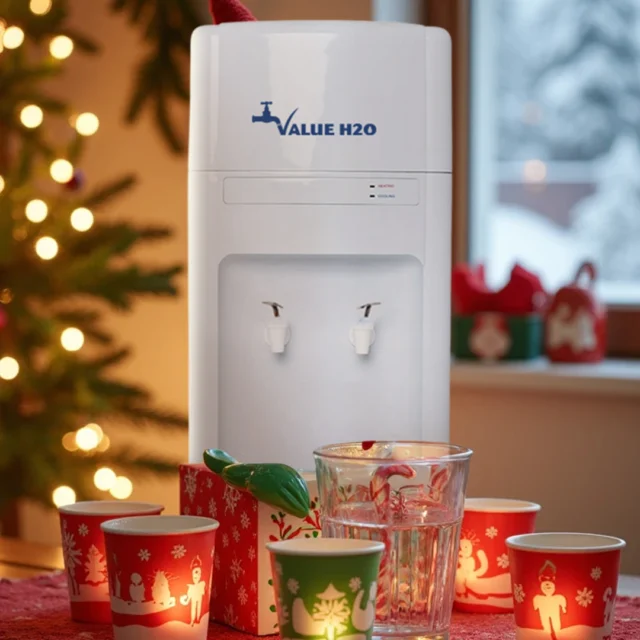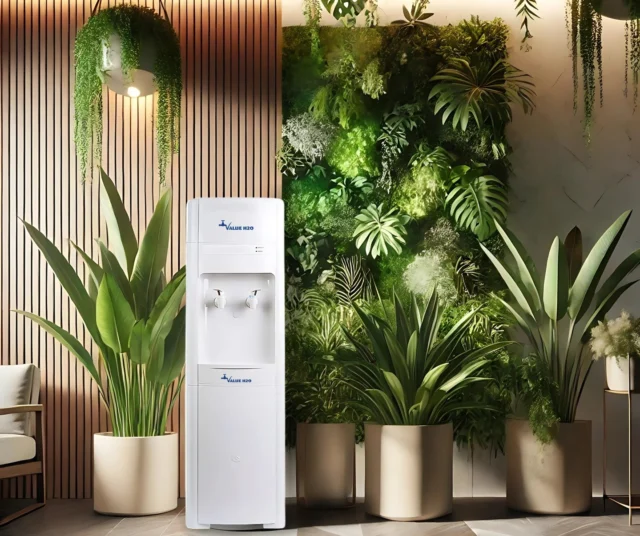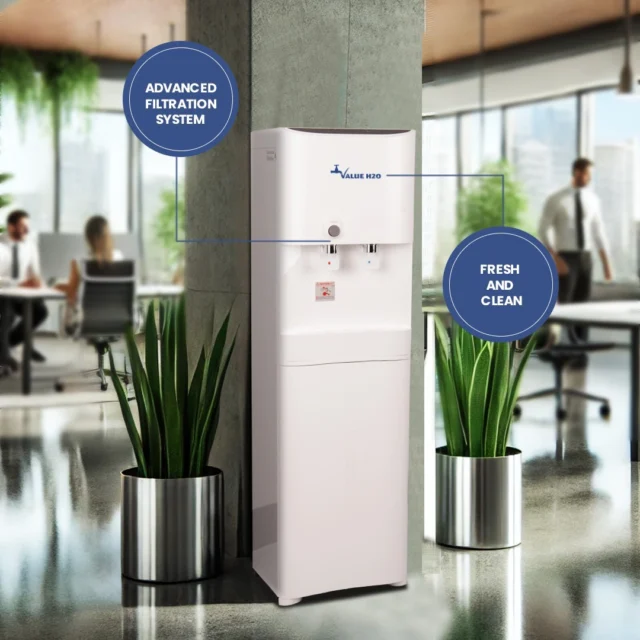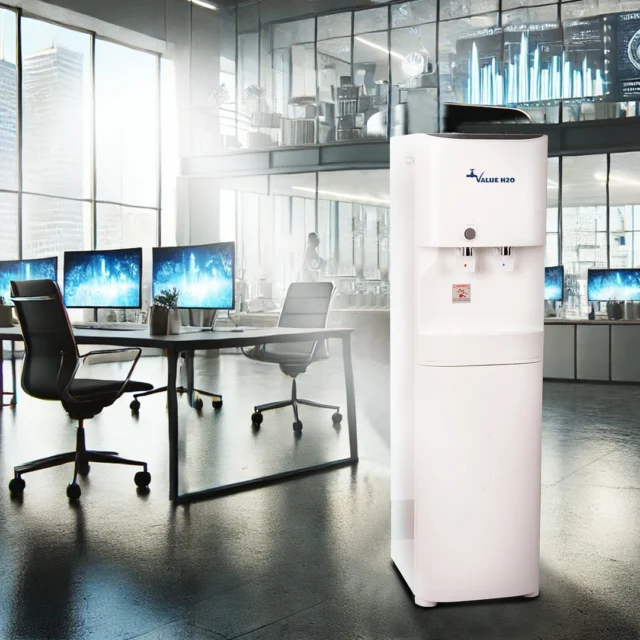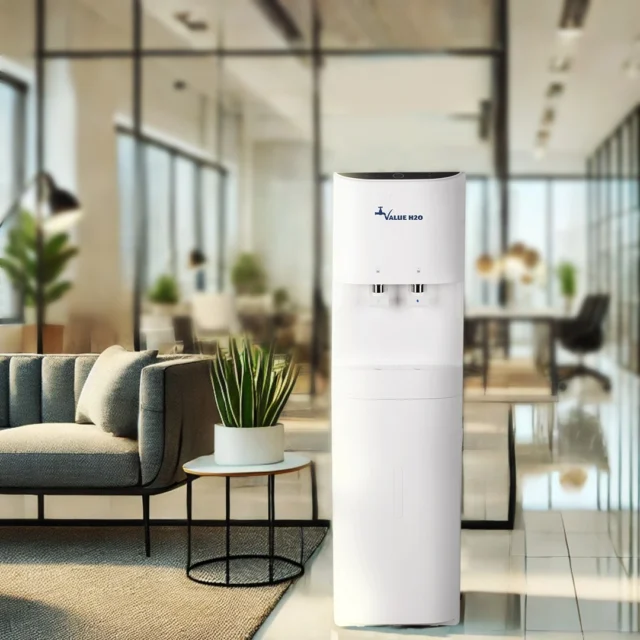As workplaces increasingly prioritise sustainability, small changes can make a big difference in reducing environmental impact. One often-overlooked yet effective way to promote sustainability is through the adoption of water coolers. By replacing single-use bottled water with eco-friendly hydration solutions, businesses can significantly cut waste, lower their carbon footprint, and set a positive example for employees and clients alike.
Addressing climate change is crucial in our sustainability efforts, as it impacts wildlife, habitats, and human life. Sustainable practices in the workplace not only benefit the environment but also ensure that future generations can meet their own needs.
This article explores how water coolers contribute to a greener workplace and why they’re a key component of modern sustainability initiatives.
What is a Sustainable Workplace?
A sustainable workplace is an environment that incorporates design, construction, and operational practices that reduce or eliminate its negative impact on the environment and its occupants. The aim of a sustainable workplace is to reduce the overall environmental impact or ecological footprint of a building or office. Sustainable workplaces use resources efficiently while creating healthier environments for people to live and work in. Examples of building green include using renewable energy sources, reducing water consumption, and using sustainable materials. Green buildings reflect the principles of sustainable development, including environmental protection, economic development, and social development.
The Role of Water Coolers in Reducing Workplace Environmental Footprint
Water coolers are more than just a convenient source of hydration—they’re a sustainable alternative to single-use plastic bottles and an energy-efficient way to keep employees refreshed. Reducing food waste is another crucial aspect of promoting sustainability in the workplace, alongside the use of water coolers. Here’s how they align with sustainability goals:
- Reduction in Plastic WasteBy encouraging employees to refill reusable bottles, water coolers help reduce reliance on single-use plastic bottles. Over time, this small shift can prevent thousands of plastic bottles from ending up in landfills or oceans.
- Energy EfficiencyModern water coolers are designed with energy-saving features, such as eco-modes and intelligent cooling systems. These innovations ensure that hydration solutions remain eco-friendly without compromising on performance.
- Support for Circular EconomyMany water cooler providers, like Value H2O, use recyclable or reusable components, minimising waste and supporting sustainable production cycles.
Benefits of a Green Initiative with Water Coolers
- Reduced Environmental ImpactTransitioning to water coolers eliminates the need for bottled water deliveries and packaging, significantly reducing the business’s overall carbon footprint.
- Cost SavingsBusinesses can save on the recurring costs of bottled water by opting for a bottleless water cooler that connects directly to the mains water supply. The long-term savings on procurement and waste management are substantial.
- Enhanced Corporate Social Responsibility (CSR)Adopting sustainable practices like water coolers demonstrates a commitment to environmental stewardship, enhancing the company’s reputation among employees, clients, and stakeholders. Engaging with local communities through volunteer work and community projects can further strengthen this commitment and promote ecological sustainability.
- Employee EngagementGreen initiatives often resonate with employees, fostering a sense of pride and motivation. Installing water coolers can inspire discussions around sustainability and encourage broader eco-conscious behaviours.
Key Features to Look for in Water Coolers for Sustainable Practices
When selecting a water cooler to complement workplace sustainability efforts, consider the following features:
- Bottleless Design: Eliminates single-use plastics by connecting to the mains water supply.
- Advanced Filtration: Ensures clean, great-tasting water while removing impurities.
- Energy-Efficient Technology: Includes features like eco-modes and automatic shut-offs.
- Durable Materials: Built to last, reducing the need for frequent replacements.
- Responsible Management of Natural Resources: Supports sustainability by promoting the responsible use and management of natural resources, aligning with initiatives like the Sustainable Development Goals.
Implementing Water Coolers to Minimize Environmental Impact as Part of a Green Initiative
- Assess Your Workplace NeedsConsider the number of employees, foot traffic, and hydration habits to choose the right type of water cooler. For large offices, high-capacity, bottleless models are ideal. Adopting more sustainable practices, such as integrating sustainability into your development frameworks, ensures that current needs do not compromise future generations.
- Encourage Reusable BottlesProvide employees with branded reusable water bottles to further reduce plastic waste and reinforce the sustainability message.
- Educate EmployeesShare information about the environmental benefits of water coolers and how they align with the company’s green initiatives. This can be done through workshops, newsletters, or team meetings.
- Partner with a Trusted ProviderWork with companies like Value H2O, which prioritise sustainability and offer energy-efficient, eco-friendly hydration solutions.
Creating a Green Team
Creating a green team is an effective way to raise employee awareness of an organization’s sustainability goals. A green team can brainstorm creative ways to tackle environmental concerns and publicly recognize the team’s success. The team can also educate and engage staff in contributing to the organization’s sustainability goals by hosting a lunch and learn about environmental issues. By forming a green team, organizations can demonstrate their commitment to sustainability and encourage employees to take an active role in reducing the organization’s environmental footprint.
Economic Benefits of Sustainability
Sustainability can have numerous economic benefits for organizations. By reducing energy expenditure, organizations can save money on energy bills. Additionally, sustainable practices can improve workforce productivity, staff engagement, and attract and retain top talent. A sustainable workplace can also create spaces that promote wellness and wellbeing at work, leading to increased employee satisfaction and reduced turnover rates. Furthermore, organizations that prioritize sustainability are more likely to attract customers who share similar values, leading to increased brand loyalty and revenue.
Overcoming Barriers to Sustainability
Despite the numerous benefits of sustainability, there are several barriers that organizations may face when trying to implement sustainable practices. One of the main barriers is the lack of awareness and understanding of sustainability among employees. To overcome this barrier, organizations can provide training and education on sustainability and its benefits. Another barrier is the perceived high cost of implementing sustainable practices. However, many sustainable practices can be cost-effective and even save organizations money in the long run. By conducting a cost-benefit analysis and identifying areas where sustainability can save costs, organizations can overcome this barrier. Additionally, organizations can overcome barriers by setting clear sustainability goals and targets, engaging employees in the sustainability process, and monitoring and reporting progress.
Value H2O: Your Partner in Sustainable Hydration
At Value H2O, we’re committed to helping businesses achieve their sustainability goals through innovative water cooler solutions. Our approach ensures that we support the health and functionality of natural systems, which are crucial for sustainable development. Our bottleless water coolers provide clean, filtered water without contributing to plastic waste. Designed with energy-efficient features and advanced filtration systems, our coolers are the perfect choice for environmentally conscious workplaces. From flexible rental plans to expert servicing, we make it easy to prioritize sustainability and employee well-being by offering solutions that are more competitive than traditional options powered by fossil fuels like coal and natural gas.
Conclusion: A Simple Step Toward Reducing Carbon Footprint in the Workplace
Adopting water coolers as part of a sustainability initiative is a practical and impactful way to reduce waste, save resources, and promote a greener future. This transition also helps mitigate environmental impacts by reducing the negative consequences of human activities on ecosystems. By transitioning to eco-friendly hydration solutions, businesses can demonstrate their commitment to environmental responsibility while fostering a healthier and more engaged workforce. Let Value H2O help you make a positive impact—one refill at a time.
FAQ Answered:
Is a water cooler eco-friendly?
Yes, water coolers are eco-friendly, especially bottleless models that connect directly to the mains water supply. They eliminate the need for single-use plastic bottles and reduce the carbon emissions associated with transporting bottled water. Additionally, many modern water coolers are designed with energy-saving features, further enhancing their eco-friendliness.
Why is a water cooler earth-friendly?
A water cooler is earth-friendly because it encourages the use of reusable bottles and reduces reliance on single-use plastics, significantly cutting plastic waste. By providing an energy-efficient way to deliver clean water, water coolers also support sustainability goals and reduce the carbon footprint of hydration.
What are the disadvantages of a water cooler?
While water coolers offer numerous benefits, they do have some drawbacks:
- Maintenance Requirements: Regular cleaning and filter replacement are necessary to ensure water quality.
- Initial Cost: High-quality water coolers can have a significant upfront cost.
- Energy Use: Although many models are energy-efficient, they still require electricity to operate.
- Potential Algae Growth: Without proper maintenance, algae can develop in the cooler, potentially affecting water quality.
Does a water cooler purify water?
Yes, many water coolers come with built-in filtration systems that remove impurities such as chlorine, sediments, and bacteria. These systems ensure the water is safe and clean for consumption. However, it’s important to maintain and replace filters regularly to ensure optimal performance.
How to start a green initiative?
Starting a green initiative involves several steps:
- Set Clear Goals: Define what you want to achieve, such as reducing waste or conserving energy.
- Engage Stakeholders: Involve employees and management in the planning process to ensure buy-in.
- Implement Changes: Introduce sustainable practices, like installing water coolers to reduce plastic waste.
- Educate and Motivate: Share the benefits of the initiative with your team and encourage participation.
- Monitor Progress: Regularly assess the effectiveness of your efforts and make adjustments as needed.
Is algae in a water cooler harmful?
Yes, algae in a water cooler can be harmful as it may contaminate the water and pose health risks. Algae growth typically occurs due to insufficient cleaning or exposure to direct sunlight. To prevent this, clean the water cooler regularly, replace filters as needed, and place it in a shaded area.
